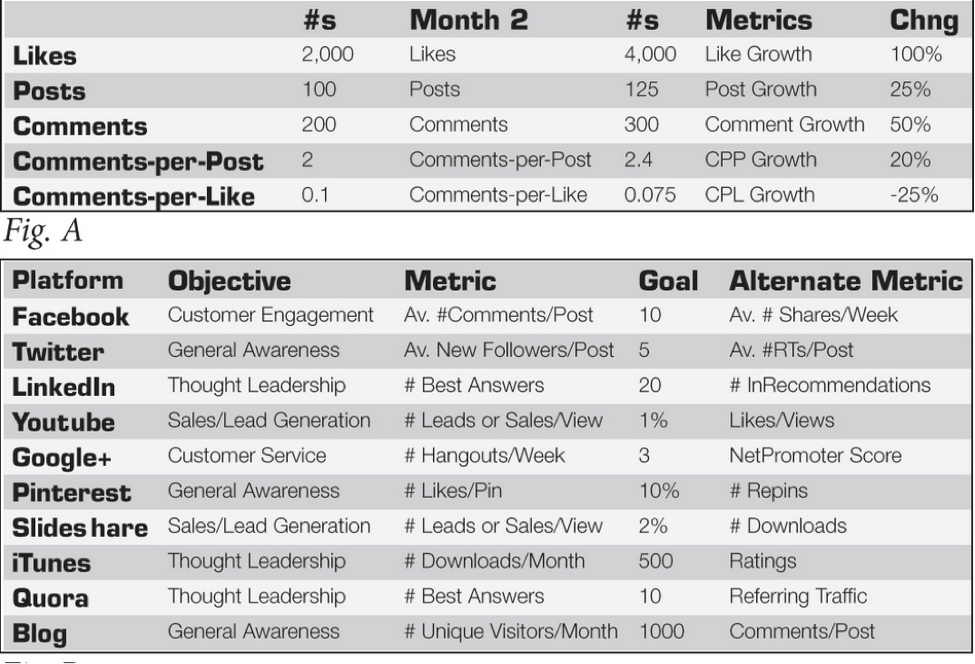Sentiment analysis, also known as opinion mining, is the analysis of the feelings (i.e. attitudes, emotions and opinions) behind the words using natural language processing tools. It’s looking beyond the number of Likes, Shares or Comments you get on an ad campaign, product release, blog post, and video to understand how people are responding to it. Was the review positive? Negative? Sarcastic? Ideologically biased?
As marketers, being able to capture the complexity of emotional responses helps us determine if our social and content marketing initiatives are driving the actions that we planned for, while also giving us hard cues for adapting our strategy, in the event that our touch points are not resonating with our customers.
How to Measure Sentiment: “Measure What Matters”
Comments, shares, Likes, re-tweets, inbound links and onsite engagement are invaluable metrics that show us how people found us and if they are engaging (or not!) with our content. But they are also what Katie Delahaye Paine, author of Measure What Matters: Online Tools For Understanding Customers, Social Media, Engagement, and Key Relationships, labels as “quantity” or “vanity metrics.”
She says that if we look at numbers only, it can give us a false sense of hope that our content is generating leads for our brand or business. With sentiment analysis, we dig deeper and look at “quality metrics”.
Quality metrics include opinions, feelings, satisfaction ratings, the quality of shares, comments, re-tweets, replies, ratings or conversations, as well as the quality of engagement over time.
To give you an idea of what a typical sentiment analysis chart might look like, here is a good example I found:

Source: Retooling Social Media Metrics To Provide Real, Actionable Insights
Using a blend of monitoring tools (like Google Analytics, Radian6, and some free ones) you can start actively listening to your audience and identify which messages and initiatives are driving the right actions and desired outcomes.
Here’s a shortlist of 10 practical tools you can use to track user sentiment:
- Meltwater: Assess the tone of the commentary as a proxy for brand reputation and uncover new insights that help you understand your target audience.
- Google Alerts: A simple and very useful way to monitor your search queries. I use it to track “content marketing” and get regular email updates on the latest relevant Google results. This is a good starting point for tracking influencers, trends and competitors.
- People Browser: Find all the mentions of your brand, industry and competitors and analyze sentiment. This tool allows you to compare the volume of mentions before, during and after your marketing campaigns.
- Google Analytics: A powerful tool for discovering which channels influenced your subscribers and buyers. Create custom reports, annotations to keep uninterrupted records of your marketing and web design actions, as well as advanced segments to breakdown visitor data and gain valuable insights on their online experiences.
- Hootsuite: A great freemium tool that allows you to manage and measure your social networks. The premium subscription provides enhanced analytics at a very reasonable 5.99USD per month.
- Tweetstats: This is a fun, free tool that allows you to graph your Twitter stats. Simply enter your Twitter handle and “let the magic happen.”
- Facebook Insights: If you have more than 30 Likes on your Facebook Page you can start measuring its performance with Insights. See total page Likes, number of fans, daily active users, new Likes/Unlikes, Like sources, demographics, page views and unique page views, tab views, external referrers, media consumption and more!
- Pagelever: This is another tool for measuring Facebook activity. Pagelever gives you the ability to precisely measure each stage of how content is consumed and shared on the Facebook platform.
- Social Mention: The social media equivalent to Google Alerts, this is a useful tool that allows you to track mentions for identified keywords in video, blogs, microblogs, events, bookmarks, comments, news, Q&A, hash tags and even audio media. It also indicates if mentions are positive, negative, or neutral.
- Marketing Grader: Hubspot’s Marketing Grader is a tool for grading your entire marketing funnel. It uses over 35 metrics to calculate your grade by looking at if you are regularly blog posting, Tweeting, updating on Facebook, converting visitors into leads, and more. It’s a full funnel way to help you measure your inbound marketing initiatives.
Dedicating time and budget to regular online listening and monitoring will help you gather, analyze, and manage conversations about your brand in order to make educated inferences on the levels of engagement your content marketing efforts are generating.
This post was originally written by Mary Montserrat-Howlett.




